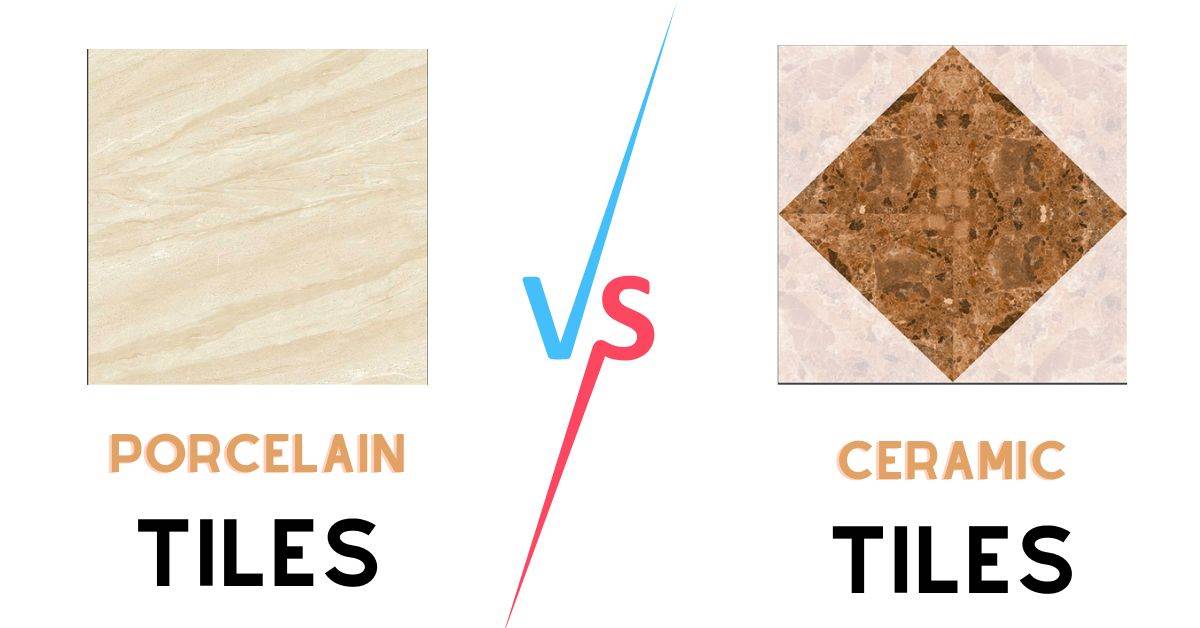The world of tile flooring is vast and dazzling, filled with countless options to elevate your home’s aesthetics and functionality. But when faced with the choice between porcelain and ceramic tiles, even the most enthusiastic design enthusiasts can encounter confusion. Fear not, for this article delves deep into the world of these tiles, unveiling their similarities, differences, and unique strengths to help you make an informed decision for your next project.
Similarities: A Shared Foundation
Both porcelain and ceramic tiles boast a shared ancestry, originating from a blend of refined clays and minerals transformed by the fiery embrace of a kiln. This shared production process imbues them with several key strengths:
- Durability: Both tiles are known for their exceptional resilience, resisting scratches, chips, and everyday wear and tear with remarkable fortitude.
- Low Maintenance: Easy to clean and maintain, they require minimal upkeep, making them perfect for busy households.
- Water Resistance: While not entirely water-proof, they offer significant resistance to moisture damage, making them suitable for kitchens, bathrooms, and laundry rooms.
- Style & Design: Both offer a diverse palette of colors, patterns, and textures, allowing you to create stunning and unique floors that complement your design vision.
Delving Deeper: Distinctive Characteristics
Despite their shared origins, porcelain and ceramic tiles diverge in subtle yet crucial aspects:
1. Material Composition and Production:
- Ceramic: Utilizes a blend of clays and minerals fired at lower temperatures (around 1,800°F).
- Porcelain: Employs a finer, denser clay mixture and endures a harsher kiln environment, reaching temperatures exceeding 2,300°F. This high-heat treatment creates a more vitrified (glass-like) structure.
2. Absorption Rate:
- Ceramic: Exhibits a higher water absorption rate (generally exceeding 0.5%), making it slightly more susceptible to water damage and staining.
- Porcelain: Boasts a remarkably low water absorption rate (usually below 0.5%), rendering it nearly impervious to water and more resistant to stains.
3. Strength and Hardness:
- Ceramic: Offers good strength and hardness, but may be susceptible to chipping or cracking under heavy impact.
- Porcelain: Renowned for its exceptional strength and hardness, making it ideal for high-traffic areas and outdoor applications.
4. Price Point:
- Ceramic: Generally more affordable due to its simpler production process and lower material cost.
- Porcelain: Typically more expensive than ceramic due to its refined materials and higher manufacturing temperatures.
Choosing the Right Tile for your Needs:
Now that you’ve unmasked the mystery, how do you select the perfect tile for your project? Here’s a quick guide:
Opt for ceramic if:
- You’re on a budget and the area experiences moderate foot traffic.
- You prioritize affordability and are willing to invest a little more in maintenance.
- You’re installing the tiles in a low-moisture environment, like a bedroom or living room.
Choose porcelain if:
- Durability and water resistance are top priorities, especially in high-traffic areas or moisture-prone spaces.
- You desire a tile with exceptional strength and hardness, suitable for outdoor applications or heavy foot traffic.
- You’re willing to invest in a premium product that offers superior performance and longevity.
Ultimately, the best choice depends on your specific needs, budget, and aesthetic preferences. Remember, both porcelain and ceramic tiles offer unique advantages, and the “right” choice boils down to what best suits your project requirements.
Wanna learn more? here is a presentation by our team on the topic Porcelain vs Ceramic
Have a enquiry about Tiles?
Fill out the form below and one of our tile expert will get back to you.


